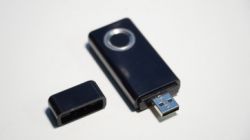Integrating SPX3819 with STM32 for Enhanced Fingerprint Recognition USB Solutions
The USB flash drive is one of those tools we often use in our daily life and work. It helps us store and copy important files and data. It's small and easy to carry around, has a large storage capacity, is affordable, and works reliably. The size of a USB drive is really small, about the size of a thumb, and it's very light, usually around 15 grams. This makes it super convenient to take with you. You can hang it around your neck, put it on a keychain, or even slide it into your wallet. Storing important data on a USB drive is really important, but if you lose it, your confidential information could be at risk. So, the security of data on USB drives is really crucial. With the development of technology, password-protected USB drives have come out in recent years. But still, they can be decrypted with software and algorithms.
In recent years, as smartphones have developed, the security of the information they hold has become more and more important. This has led to the use of technologies like voice recognition, fingerprint, facial recognition, and iris scanning in mobile apps. Among these, fingerprint unlocking is good for encrypting USB drives because fingerprint features are unchangeable, unique, and convenient. Fingerprint recognition works by comparing the detailed features of different fingerprints. This technology involves many fields, like image processing, pattern recognition, computer vision, mathematical morphology, and wavelet analysis. Since everyone's fingerprints are different, and even the ten fingers of the same person are very different, fingerprints can be used for identity verification. But because each fingerprint impression can be a bit different due to the angle and pressure, and there are a lot of blurry fingerprints, accurately extracting features and getting the right match is still the key to fingerprint recognition technology.
So, using micro-controller technology and fingerprint recognition, I designed and made a fingerprint-recognition USB flash drive.
I upgraded a normal USB drive to design and make this fingerprint-recognition USB drive. The principle is pretty simple. First, fingerprints are registered through a fingerprint recognition module on a PC. Then, the micro-controller keeps getting and checking the matching results from the fingerprint module. If the match is successful, the micro-controller turns on the USB drive's power by controlling transistors, so the computer can read and write data on the USB drive.
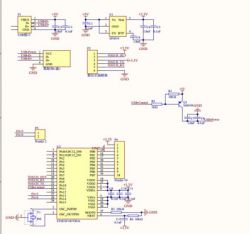
Power Section: The power is supplied through a USB male connector, providing a 5V voltage from the USB power source. This voltage is then regulated to 3.3V by the SPX3819(https://www.unikeyic.com/products/1003301013815/SPX3819S.html) to power the microcontroller circuit. Even though the SPX3819 is in a small SOT23 - 5 package, it can supply an output current of up to 500mA. It has quick transient response, a wide input voltage range, low quiescent current, low noise, and a high Power Supply Rejection Ratio (PSRR). So, it's a great option as an LDO linear voltage regulator chip.
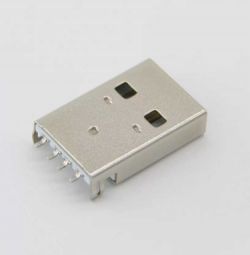
The USB flash drive part uses a black resin USB drive, like the one in the picture below. The black resin USB drive is a semi - finished module that uses PIP (Plastic Interconnect Package) packaging technology. It combines the USB interface and the chip. This design has a few good things: it has a huge storage capacity like memory cards, high read/write speeds, it's strong (it can handle pressures up to 50 Newtons), it's really good at keeping water out and stopping static, and it can handle high temperatures.
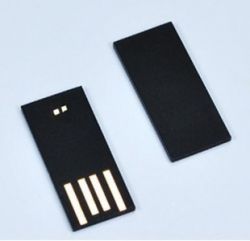
The microcontroller section employs the STM32F103T8U6 (Link), which has only 36 pins and uses a QFN package, resulting in a remarkably compact chip. Despite its small size, it is fully equipped with everything necessary. It integrates the Cortex-M3 core, featuring a main frequency of 72MHz, 64KB of Flash memory, 20KB of SRAM, two 12-bit ADCs, seven timers, two hardware I2C interfaces, three serial ports, two SPI interfaces, as well as CAN and USB 2.0 interfaces. In short, it is an exceptionally powerful device.
Explore the powerful STM32F103T8U6 and a wide range of micro-controllers on Unikeyic (Link) component platform, available for purchase online.
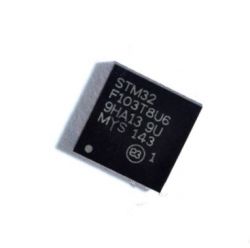
The power control bit for the USB drive is quite simple. It uses the I/O port of a microcontroller to control whether an SS8550 transistor conducts or not, so it can control the power supply to the USB drive.
For the fingerprint recognition part, a capacitive fingerprint recognition module is used. This module gets fingerprints by spotting changes in capacitance values. Capacitive sensors are a kind of semiconductor sensor, and the semiconductor capacitive fingerprint sensor is used a lot. These sensors use automatic control technology to change the pixel resolution of the fingerprint image and the sensitivity of local fingerprint areas. By putting together feedback info from different environments, they make high - quality images. Because of the ability to make local adjustments, even low - contrast images (like areas where the finger is pressed lightly) can be detected well. The sensor makes these pixels more sensitive when it takes the picture, so it can get high - quality fingerprint images.
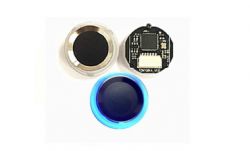
Capacitive fingerprint sensors have quite a few benefits. They can produce really good quality images with hardly any distortion. They're small and can be easily put into different kinds of devices. The electronic signals they send out can go through the surface of the finger and the dead skin layer, all the way to the live skin layer (the dermis) to directly get the fingerprint pattern. This makes the system a lot more secure. For capacitive sensors, it's better when it's drier. They don't have the same problems as optical sensors. Up to 85% humidity is okay. But if it's too humid, it can mess up the electric field because water conducts electricity, so it shouldn't go over that limit. Also, since the sensor gets the patterns from the dermis layer, if the epidermis on the surface is a bit worn, it won't affect how sensitive the sensor is. This module uses serial communication and has a built - in fingerprint recognition algorithm, which makes it easy to develop with and use. It's highly integrated and small, so it's simple to put it into a fingerprint - recognition USB drive.
Let us now proceed with the creation of the fingerprint-recognition USB drive.
1.Select an appropriate USB device casing
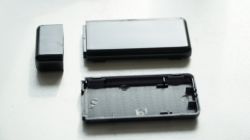
2.Design a circuit board with appropriate shape and dimensions according to the internal structural layout of the USB device casing.
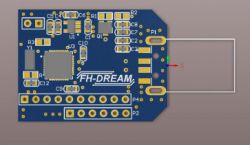
3.Solder the circuit board.
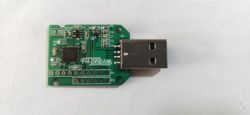
4 . Use a heat gun to solder the epoxy-coated USB drive to the back of the circuit board. Make sure that the USB contacts on the epoxy-coated drive are joined to the circuit board pads with solder. This not only makes the connection but also holds the components firmly in position.
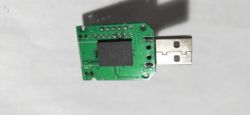
5.Create an opening on the upper shell cover.
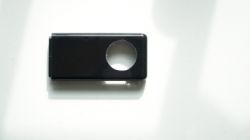
6.Install the fingerprint recognition module.
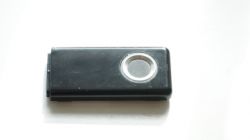
7.Place the welded circuit board into the casing and connect the fingerprint recognition module properly.
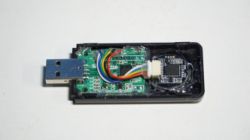
8.Finally, install the outer shell, and the creation is complete.
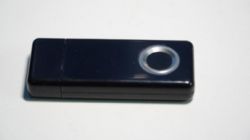
Finally, let's talk about the program design for the fingerprint recognition USB drive. The principle is fairly straightforward: the micro-controller constantly gets the fingerprint matching results in real - time. When it finds a correct fingerprint match, it turns on the power for the epoxy - coated USB drive, allowing the computer to recognize the USB drive.
After using it for a while, I think the results are really good. Even in dry weather, the success rate of fingerprint recognition is still very high.
